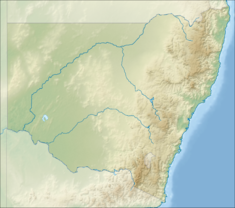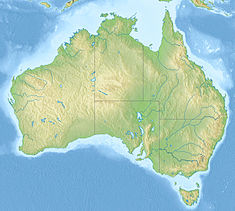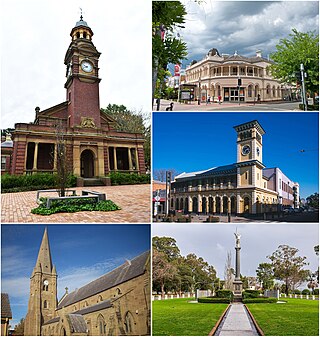
Maitland is a city in the Hunter Valley of New South Wales, Australia and the seat of Maitland City Council, situated on the Hunter River approximately 166 kilometres (103 mi) by road north of Sydney and 35 km (22 mi) north-west of Newcastle. It is on the New England Highway approximately 17 km (11 mi) from its origin at Hexham.

Branxton is a town in the Hunter Region of New South Wales, Australia. Branxton is 171 kilometres (106 mi) north of Sydney via the Pacific Motorway and New England Highway. Branxton is located mostly in the City of Cessnock, but part of it is in Singleton Shire.
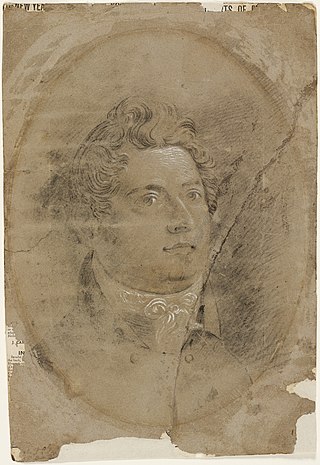
Francis Howard Greenway was an English-born architect who was transported to Australia as a convict for the alleged crime of forgery. He became known as the ‘forefather of Australian architecture’. In New South Wales he worked for the Governor, Lachlan Macquarie, as Australia's first government architect. He became widely known and admired for his work displayed in buildings such as St Matthew's Church, St James' Church and Hyde Park Barracks.

Paterson is a small township in the lower Hunter Region of New South Wales, Australia. Located within Dungog Shire and City of Maitland, it is situated on the Paterson River. It is in the middle of what was once dairy, timber and citrus country and is now more significantly a feeder town for the nearby mining industry in the Upper Hunter and the city of Newcastle. It was named after one of the first known Europeans in the area was Colonel William Paterson in 1801 surveyed the area beside the river.

East Maitland railway station is a heritage-listed railway station located on the Main Northern line in New South Wales, Australia serving East Maitland. It is the fourth site of the station known as East Maitland. It was added to the New South Wales State Heritage Register on 2 April 1999.
East Maitland is a suburb in Maitland, New South Wales, Australia. It is on the New England Highway and it has two railway stations, Victoria Street and East Maitland. Both stations are served by NSW TrainLink. Hunter Valley Buses provides bus service.
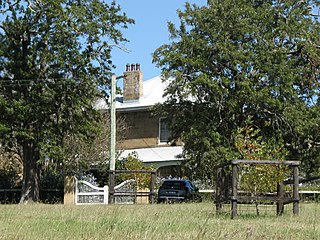
Dunmore House is a heritage-listed residence at 557 Paterson Road, Bolwarra Heights, City of Maitland, New South Wales, Australia. It was built from 1830 to 1833 by William and Andrew Lang. It was added to the New South Wales State Heritage Register on 16 August 2012.

Wollombi is a small village in the Hunter Region of New South Wales, Australia. It is within the Cessnock City Council LGA, situated 29 kilometres (18 mi) southwest of Cessnock and 128 km (80 mi) north of Sydney. To the south is the village of Laguna, to the east, the village of Millfield and to the north, the village of Broke.
Bolwarra Heights is a suburb in the City of Maitland in the Hunter Region of New South Wales, Australia. It is located on the eastern side of the Hunter River, approximately 5 km (3.1 mi) north of the Maitland central business district. Mainly a residential suburb, Bolwarra Heights is bordered to the east by Largs. The traditional owners and custodians of the Maitland area are the Wonnarua people.
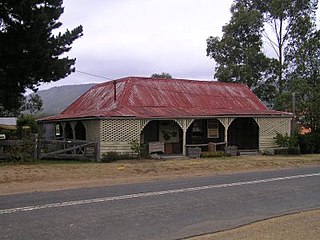
Rising Sun Inn is a heritage-listed former post office, inn, general store and residence and now museum, craft shop and art gallery at 95-97 Wollombi Road, Millfield, City of Cessnock, New South Wales, Australia. It was built from 1832 to 1838. It was added to the New South Wales State Heritage Register on 2 April 1999.

Clarence Town Courthouse is a heritage-listed former courthouse and now museum at 49 Grey Street, Clarence Town in the Hunter region of New South Wales, Australia. It was built from 1868 to 1869. It was added to the New South Wales State Heritage Register on 2 April 1999.
Hastings Historical Society Museum is a heritage-listed former retail store and now museum at 22 Clarence Street, Port Macquarie, Port Macquarie-Hastings Council, New South Wales, Australia. It was built from 1835 to 1840 by William Stokes. It is also known as Port Macquarie Historical Society Museum and Port Macquarie Museum. It was added to the New South Wales State Heritage Register on 2 April 1999.
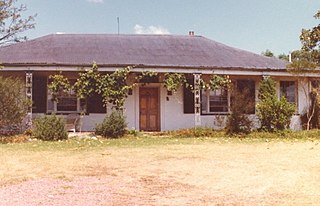
Oldholme is a heritage-listed residence at 12 Wallis Street, East Maitland, City of Maitland, New South Wales, Australia. It was built from 1835 to 1839. It is also known as Government Cottage, Denny Day's Cottage and Bonnie Doon. It was added to the New South Wales State Heritage Register on 2 April 1999.

Englefield is a heritage-listed former inn and now residence at 49 Newcastle Street, East Maitland, City of Maitland, New South Wales, Australia. It was built in 1837. It operated as the Black Horse Inn from 1845 to 1878. It was added to the New South Wales State Heritage Register on 30 April 2008.

Caroline Chisholm Cottage is a heritage-listed residence and former hospital and benevolent asylum at 3 Mill Street, East Maitland in the Hunter region of New South Wales, Australia. It was built from 1831 to 1835 by John Smith. It is also known as Smith's Row, the Maitland Benevolent Asylum, the East Maitland Immigrants' Home and the Caroline Chisholm Barracks. It was added to the New South Wales State Heritage Register on 2 April 1999.

Macquarie Arms Hotel is a heritage-listed hotel at Thompson Square in Windsor, New South Wales, Australia. It is also known as the Royal Hotel. It was added to the New South Wales State Heritage Register on 2 April 1999.

Mountain View is a heritage-listed residence at 22 Inalls Lane, Richmond, City of Hawkesbury, New South Wales, Australia. It was built from 1804 to 1870 by Lewis Jones and James Vincent. It is also known as Dight's Farm. It was added to the New South Wales State Heritage Register on 2 April 1999.

Windsor Court House is a heritage-listed courthouse at Court and Pitt Streets, Windsor, City of Hawkesbury, New South Wales, Australia. It was designed by Francis Greenway with a later extension by James Barnet and built from 1821 to 1822 by William Cox. It was added to the New South Wales State Heritage Register on 2 April 1999.
Wambo Homestead is a heritage-listed disused homestead at Warkworth, Singleton Council, New South Wales, Australia. It was built from 1830 to 1906. It was added to the New South Wales State Heritage Register on 2 April 1999.
Gentleman John Smith was an English man who was convicted and imprisoned for theft before being transported to Australia as a convict, twice. In Australia he later became a police official, serving as chief constable of Newcastle in New South Wales.

